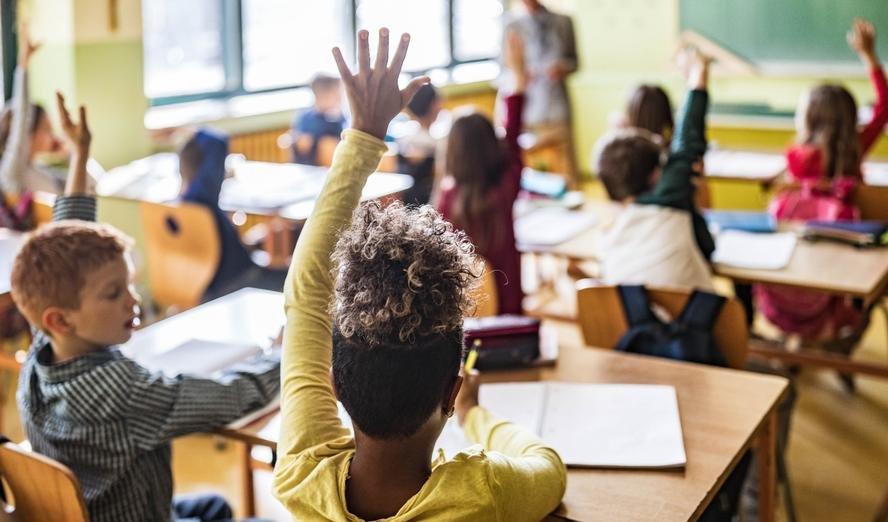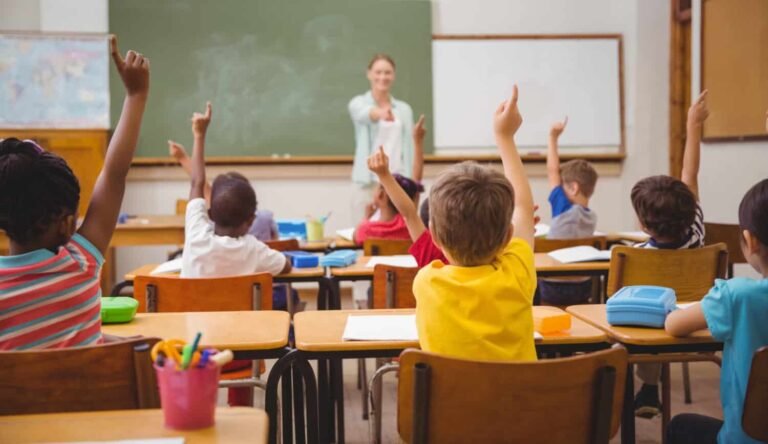How Many Students Are Enrolled in US Schools?
The current state of enrollment in US schools is a complex and ever-changing landscape. According to the National Center for Education Statistics, there were approximately 50.7 million students enrolled in public elementary and secondary schools in the United States in the fall of 2020. This number represents a slight decrease from previous years, as the birth rate in the US has been declining, leading to a smaller pool of school-aged children. Additionally, the COVID-19 pandemic has had a significant impact on enrollment, with many families choosing to homeschool or enroll their children in virtual learning programs. This has led to fluctuations in enrollment numbers across the country, with some districts experiencing an increase in students while others have seen a decline.
Despite these challenges, the US continues to have one of the largest and most diverse student populations in the world. The enrollment numbers vary significantly by region, with some states experiencing rapid population growth and others facing declining numbers. Additionally, there are significant disparities in enrollment rates among different demographic groups, with students from low-income families and minority backgrounds often facing barriers to accessing quality education. As the US continues to grapple with these issues, it is essential to understand the factors that affect student enrollment and how they are likely to evolve in the coming years.
Factors Affecting Student Enrollment Numbers
There are numerous factors that can affect student enrollment numbers in US schools. One of the most significant factors is demographic shifts, including changes in birth rates, immigration patterns, and population growth. As the US population becomes increasingly diverse, with a growing number of students from minority backgrounds, it is essential for schools to adapt to meet the needs of a changing student body. Additionally, economic factors can play a significant role in enrollment numbers, as families may be more likely to move to areas with better job opportunities and higher quality schools.
Another factor that can affect student enrollment is the availability of alternative education options, such as homeschooling and charter schools. In recent years, there has been a rise in the number of families choosing to homeschool their children, citing concerns about safety, curriculum quality, and individualized instruction. This trend has had a significant impact on enrollment numbers in traditional public schools, as some families opt for alternative education options that better meet their needs. Additionally, the growth of charter schools has also affected enrollment numbers, as these schools often draw students away from traditional public schools by offering specialized programs and smaller class sizes.
Trends in Student Enrollment Over the Past Decade
Over the past decade, there have been several notable trends in student enrollment in US schools. One of the most significant trends has been the decline in birth rates, which has led to a decrease in the number of school-aged children. This trend has been particularly pronounced in rural areas and small towns, where population growth has been stagnant or declining. As a result, many school districts have faced challenges in maintaining enrollment numbers and have had to make difficult decisions about school closures and consolidations.
Another trend that has emerged in recent years is the rise of homeschooling as an alternative education option. Many families have chosen to homeschool their children for a variety of reasons, including concerns about safety, bullying, and academic quality. This trend has had a significant impact on enrollment numbers in traditional public schools, as some families opt for homeschooling over traditional schooling. Additionally, there has been a growing interest in charter schools, which offer specialized programs and smaller class sizes that appeal to many families.
The Impact of Demographic Shifts on School Enrollment
Demographic shifts have had a significant impact on school enrollment in the US. As the population becomes increasingly diverse, with a growing number of students from minority backgrounds, it is essential for schools to adapt to meet the needs of a changing student body. This includes providing culturally responsive curriculum, hiring diverse staff members, and creating inclusive learning environments. Additionally, demographic shifts can also affect enrollment numbers by influencing birth rates, immigration patterns, and population growth.
One of the most significant demographic shifts affecting school enrollment is the increase in students from minority backgrounds. According to the National Center for Education Statistics, students from minority backgrounds are expected to make up the majority of public school students by 2022. This shift has important implications for schools, as they must work to address disparities in academic achievement and ensure that all students have access to high-quality education. Additionally, demographic shifts can also affect enrollment numbers by influencing birth rates, immigration patterns, and population growth.
The Rise of Homeschooling and its Effect on Enrollment Numbers
The rise of homeschooling has had a significant effect on enrollment numbers in US schools. Many families have chosen to homeschool their children for a variety of reasons, including concerns about safety, bullying, and academic quality. This trend has led to fluctuations in enrollment numbers across the country, with some districts experiencing an increase in students while others have seen a decline. Additionally, homeschooling has become an increasingly popular option for families seeking more flexibility and individualized instruction for their children.
The impact of homeschooling on enrollment numbers is particularly pronounced in rural areas and small towns, where population growth has been stagnant or declining. In these areas, many families have opted for homeschooling as an alternative education option that better meets their needs. This trend has led to challenges for traditional public schools, as they must work to retain students and adapt to changing demographics. Additionally, homeschooling has also led to increased demand for online learning programs and virtual schooling options, as families seek alternatives to traditional public schools.
The Role of Charter Schools in Student Enrollment
Charter schools have played a significant role in shaping student enrollment in US schools. These schools offer specialized programs and smaller class sizes that appeal to many families seeking alternatives to traditional public schools. As a result, charter schools have drawn students away from traditional public schools and have had an impact on enrollment numbers across the country. Additionally, charter schools have also faced challenges related to funding and accountability, as they must work to demonstrate their effectiveness and meet state standards.
One of the most significant impacts of charter schools on student enrollment is their ability to offer innovative educational programs that cater to diverse student needs. Many charter schools focus on specific areas such as STEM education, arts integration, or language immersion, which can attract families seeking specialized instruction for their children. Additionally, charter schools often have more flexibility in hiring and curriculum development, allowing them to create unique learning environments that appeal to many families. As a result, charter schools have become an increasingly popular option for families seeking alternatives to traditional public schools.
Projected Changes in Student Enrollment in the Coming Years
Looking ahead, there are several projected changes in student enrollment that are likely to shape the future of US schools. One of the most significant changes is the continued impact of demographic shifts on enrollment numbers. As the US population becomes increasingly diverse, with a growing number of students from minority backgrounds, it is essential for schools to adapt to meet the needs of a changing student body. This includes providing culturally responsive curriculum, hiring diverse staff members, and creating inclusive learning environments.
Additionally, there is likely to be continued growth in alternative education options such as homeschooling and charter schools. Many families are seeking alternatives to traditional public schools that better meet their needs for flexibility and individualized instruction. As a result, traditional public schools may face challenges in retaining students and adapting to changing demographics. However, this trend also presents opportunities for innovation and collaboration between different types of educational institutions.
Read Also: Do International Nursing Students Work in USA After School?
Conclusion
The current state of enrollment in US schools is influenced by a variety of factors including demographic shifts, economic trends, and the rise of alternative education options such as homeschooling and charter schools. These factors have led to fluctuations in enrollment numbers across the country and have important implications for the future of education in the US. As we look ahead to projected changes in student enrollment, it is essential for schools to adapt to meet the needs of a changing student body and provide high-quality education for all students. By understanding these trends and their impact on enrollment numbers, we can work towards creating more equitable and inclusive learning environments for all students.







